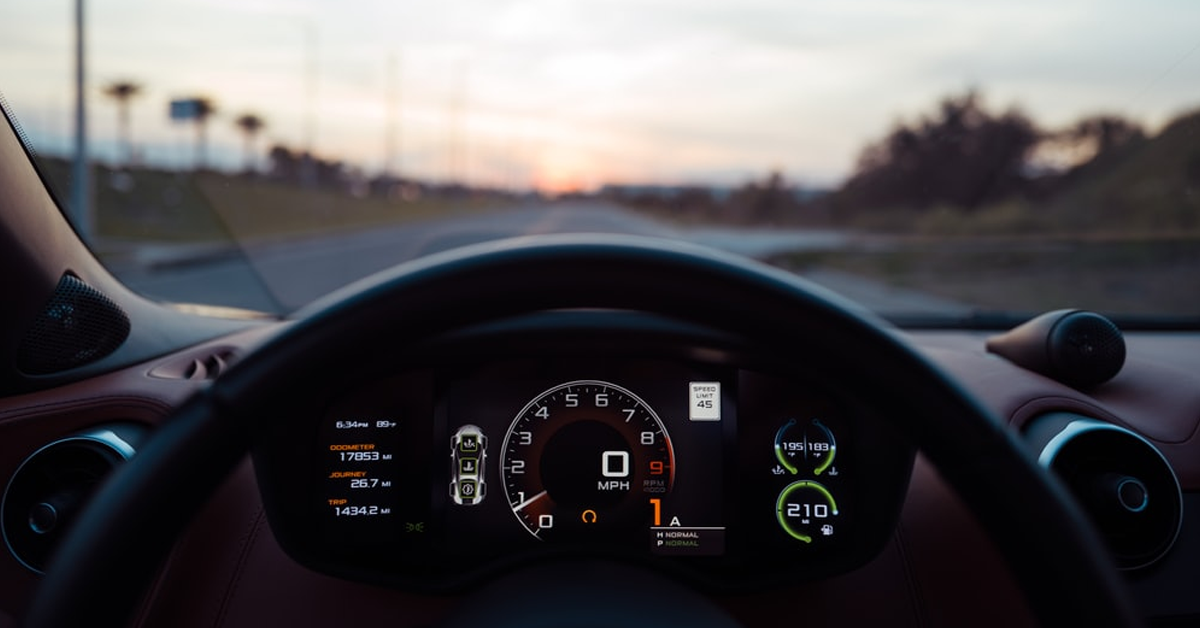Dashboard Warning Lights Explained

Most of us have been driving for years, but are clueless regarding the warning lights that sometimes pop up on the dashboard. Usually, the lights are just ignored until something catastrophic happens.
Certain car dashboard accessories can keep you warned about the status of your car such as a tyre pressure monitoring system.
It is a good idea to be well informed about the various dashboard warning lights that appear on the instrument panel. Warning lights appear whenever there is a problem with a vehicle function like low oil level, high engine temperature or low battery charge.
If we ignore these problems as they crop up, it can lead to major and costly repairs. For example, a low engine oil level may cause the various moving components in the engine to wear out and fail.
Standard instrument panel warning lights
It is best to refer to your owner’s manual whenever you see a blinking warning light on your dashboard.
However, we have curated this list of the most common dashboard warning lights to help you identify the problems at hand.
Check Engine Light
This is a yellow light that looks like an engine with check written inside it. Other variations of this light include a service engine soon text, which generally indicates an emission or a general engine functioning problem. As soon as you see this light, make sure to take the car to a service station as soon as possible. Drive as slow as possible and avoid hard acceleration when this light is on.
Battery Light
This light is a picture of a battery with a plus and minus sign on it. This sign indicates that the battery is not charging properly or it is low on power. The battery light on may lead to electrical problems with the steering, brakes, lights, engine and accessories. It could also mean there is a problem with the alternator.
High-temperature warning light
This is a thermometer in red that signifies engine and coolant temperature is at high levels, and is close to overheating. The car should be stopped if this light illuminates because driving the car in this condition can cause the engine to fail.
The problem most likely is with the coolant levels, radiator or water pump, all of which are used to cool the engine. Drive at a slow speed to a service centre as soon as possible.
Low Oil Pressure
The oil pressure indicator light is a picture of a leaky oil can and indicates a loss of oil pressure within the engine. This means that moving parts are not being lubricated properly so you should not drive when this light is illuminated.
Try topping up the engine oil level and check if the light goes off. The car will have to be checked by a technician if the light fails to go away.
ABS warning
This light will have the letters ABS flashing in your instrument panel. ABS stands for Anti-Lock Braking System and helps ensure safe braking in emergencies. If this light is flashing, it may be unsafe to drive the car as ABS is an important safety feature.
Have your braking system checked by a technician to ensure that it is working properly.
SRS Airbags
The airbag warning light looks like a person strapped in a seat with a seatbelt and an inflated airbag in front of it. If this light illuminates, it indicates a problem with the airbag system. Airbags inflate during a crash and keep the occupants safely cushioned against violent forces.
The vehicle should not be driven when the airbag warning light is flashing because it is a safety concern. Have the airbag system inspected by a technician to make sure it is working fine.
Seat belt reminder
This light shows a passenger in a car seat with a seatbelt fastened. It is usually accompanied by a chiming bell or beeping sound that indicates that the seat belt has not been fastened.
You should fasten your seatbelt as soon as you see this light. If the light fails to disappear even after fastening the seatbelt, have the system checked by a service technician. Some cars have a weight sensor that indicates excess load on the seat. Try removing the weight to see if the warning light goes away.
Conclusion
If you are aware of the various dashboard warning lights on your instrument panel and take corrective measures in time, you may save on costly repairs, safety issues and perhaps total engine failure.
If repairs are administered in the initial stages, they are usually inexpensive and can be fixed easily. A warning light like low windshield wiper fluid may be inconsequential and cause a minor inconvenience, but having low oil pressure is more serious and requires immediate attention.
So, to save expenses, protect your engine and other components from damage, and ensure the safety of the driver and occupants, keep a close eye on dashboard warning lights and take necessary steps when required.
If you liked this article on dashboard warning lights, perhaps you would like to read about car accessories.
Also Read: Possible Failures in a Ferrari You Need to Watch Out For